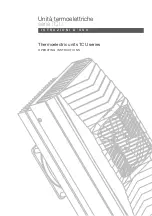
1000A
User Manual
14
Trade secrets
Quest Engineering instant
sound guy course
How to avoid distortion in your system
Whether you are starting with one microphone
two turntables and an iPod, or a 48 channels of
live band, the audio principles are the same. If
you introduce distortion to any part of the audio
chain, it will still be there at the end of the line
(your speakers).
A small audio system may only be a sound source,
a mixer and a amplifier/speaker combination. A
slightly bigger one may have added to the chain,
DI boxes, digital effects, compressors, equalizers
and electronic cross-overs. Any of these units that
have excessive input level will pass on distortion
to all the following equipment in the chain.
It follows that all the individual units must have
their input and output levels operating within their
designed operational range. A mixer output meter
that is s 9 dB at the end of the “red bars”,
only to be pushing a compressor/limiter to limit
10dB is only going to sound bad, not get louder.
When you look at a Vu meter on a mixer (Vu
means voltage units), you will see a row of
numbers with a minus (-) sigh in front of them
leading to a “0dB” on the right hand side. The
“0” means you have hit full power. After that, you
are heading into distortion country. How much
distortion will depend on a number of factors
but it is enough to say that by the time you get to
the end of the red, your mixer is now a distortion
box and sooner or later you are going to “fry”
something.
What is Line Level?
For the purposes of live sound, line level is a
signal standard made up by a group of engineers
many years ago to set a common agreement of
how much voltage a preamplifier should output,
in order to drive a power amplifier to full power
without going into distortion itself. The standard
varies a little between countries but it is generally
agreed that for our purposes, 0.775 volts of
preamp signal will drive an amplifier to full power.
In some countries, this standard is 1 volt. Let’s
say, 0.775 volts is “0” dB on your Vu (voltage units)
meter. Every dB you send that pointer or red bar
over 0dB you are testing the headroom of the
system.
Calibrating your system for maximum
power output.
It follows that your mixer and amplifier may
have different standards of what we call “0dB”
(remember the 0.775 and 1volt variation between
some countries). One test you can do is to set
up and turn on your audio system and after you
have sound, unplug your speakers and play some
music. Turn up the mixer until your amplifiers
start to “clip” a little with regular flashes of the
clip lights with the beat. So long as the clip lights
don’t stay on for more than a flash, you have
reached the practical limits of your system as far
as output power is concerned. Take note where
this setting is on your mixer. Now you know how
much “headroom” your system has. Also check
any other equipment that may be in the line such
as EQ units to make sure they are not deep in the
“red”. Now adjust your input and output levels so
that your mixer is not at the end of the red bars
or the pointer on the Vu meter is not hard over
into the red.
Now turn down the system and plug the speakers
back in. This method of calibrating the system is
not totally accurate but it is a good start. If your
find system is not loud enough after this test,
go and get more speakers and amplifiers.
A distorting sound system may sound louder,
but it won’t live long.


































